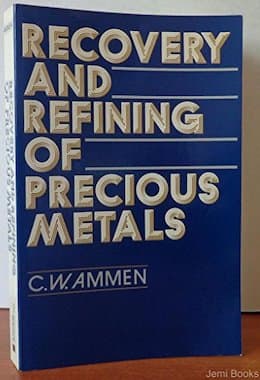
-----
Chart of Activity Series
Q. Where can I find a chart the lists or groups metals in anodic/cathodic order? I am an engineer that often calls out fasteners and hardware that may be subjected to potential differences.
Doug Dinainstruments - Duluth, Georgia
1996
A. Hi Doug. These charts are published in numerous books available at the library. Supplementary ones have been published to draw finer distinctions between alloys and deposition conditions.
But I think what you want to search for on the internet is the "Sea Water Series", as opposed to the "Galvanic Series", since the potential differences you are looking for depend on field conditions, and the "Sea Water Series" is supposedly a fairly good 'real world' arrangement of the potentials. Good luck.

Ted Mooney, P.E.
Striving to live Aloha
finishing.com - Pine Beach, New Jersey
Ted is available for instant help
or longer-term assistance.
1996
A. Doug,
I assume that you are interested in the galvanic series of metals in seawater? There would be a different galvanic series for different environments.
Two good sources of galvanic series data are MIL-STD-889 and "Corrosion Handbook" by F.L. LaQue. The International Nickel Co. also published some interesting literature on this subject.
McDonnell Douglas Aerospace
1996
A. Another good source of information is Table VI in MIL-DTL-14072 [⇦ this spec on DLA] ("Finishes for Ground Electronic Equipment") which shows compatible couples.
Also, there was a paper written by J.R. Crum and R.C. Scarberry of Inco Alloys International, Inc. Huntington Alloys, Huntington, WV 25720 (sorry, I do not have the exact reference) entitled "Development of Galvanic Series in Various Acid and Water Environments" which provides numerous anodic/cathodic charts relative to the conditions under which the metals were tested.
Blair Smithaerospace - Windsor Locks, Connecticut
1996
A. I found a nice chart online at: www.corrosionsource.com/handbook/galv_series.htm
Paul Maxteddesign - Round Rock, Texas
2000
A. I FOUND THIS NICE CHART: www.corrprev.org.au/Galvanic.htm
CARLOS A. GARCIAaerospace - TULSA, OKLAHOMA
2001
Precipitation of metals from aqueous solution
Q. I have metals from e-waste in aqueous solution and would like to know which metals precipitate out higher metals and in what order. Can I suspend a Silver Ingot in the solution to precipitate out higher metals?(platinum, palladium, gold, etc,)?
Pastor David Jonsson- Trinidad, California USA
October 26, 2017
November 2017
A. Hi Pastor David. The "galvanic series" offers the general info you are seeking and, yes, as a general rule you can put a silver ingot into an aqueous solution to precipitate out more noble metals like gold and platinum through displacement. But few things are as simple and universal as we wish they were, and you will probably find that this precipitates some but not all of the more noble, more precious metals. Good recovery of precious metals from wastes can be a complicated undertaking. Good luck.
Regards,

Ted Mooney, P.E. RET
Striving to live Aloha
finishing.com - Pine Beach, New Jersey
Ted is available for instant help
or longer-term assistance.
A. To work, the metal you use must be able to dissolve in the particular solution you have. If your solution is acid and, if it contains any chlorides, the silver will not dissolve and, therefore, it will not reduce any Au, Pt, or Pd out of the solution. Actually, to initially dissolve those 3 metals, about the only acidic solution that will work is aqua regia, which contains HCl (high chlorides). If that is the case, silver will not precipitate those metals from that solution.
Copper will precipitate those 3 metals from aqua regia at essentially 100% efficiency. However, if there is any unused nitric acid in the aqua regia, it will dissolve copper until is is consumed before it starts precipitating any of the 3 metals. On copper, the precipitated Au, Pt, and Pd will appear as a fine black powder, with maybe some very dark brown mixed in.
If you have a cyanide solution, you might have a little better luck using silver but I doubt if anything close to 100% of the 3 metals will drop out. In cyanide, you might try 325 mesh zinc dust
⇦ on
eBay or
Amazon [affil link]
.
If there are still questions, please ask.
Gold/Silver Refining Consultant - Benton, Arkansas, USA
November 7, 2017
Q, A, or Comment on THIS thread -or- Start a NEW Thread
